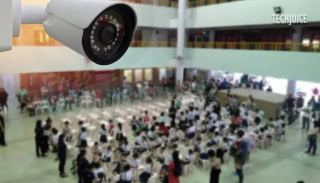According to research published in Review X, tubular laser beams can produce Fiber-Optic cables that are essentially made of nothing.
Laser-heated air can efficiently and effectively transmit light signals without the need to lay Fiber-Optic cables. Building on earlier efforts that were hailed as a path to laser beam weapons, these air-based wave-guides help in providing pathways for ultrahigh energy lasers that don’t propagate well through the air on their own.

According to the latest experiments, physicist Howard Milchberg of the University of Maryland in College Park beta out his team’s prior wave-guide attempts by more than 60 times, extending the wave-guide length to nearly 50 meters.
The researchers established a laser in “doughnut mode,” in which the beam has a hollowed-out core with its length resembling a stack of luminous doughnuts. The rays create a hot, tubular air layer wrapped around cooler, denser air.
The process begins with something akin to a Fiber-Optic Cable mode of air instead of a transparent core covered in the plastic cladding that helps guide light in conventional fiber optics.
On the other hand, the hot air serves as a cladding, whereas the dense air act as a core. Moreover, stepping up the wave-guide length to kilometers. According to Milchberg, it’s primarily a matter of boosting the doughnut-mode laser power.
According to the company, their latest offering consists of three pieces: an LTV-3500 ultra short throw laser projector. Including a 100-120″ roll-up screen and an intelligent cabinet with built-in 36-watt speakers.
“The only issue is we don’t have a kilometer” to fire a laser that far safely, he says. It may take a deal with one of the U.S. national laboratories to find space to run a more extended version of the experiment.
Despite the potential military applications, Milchberg claims that he and his team are more interested in scientific applications. Like expanding the range of systems that use lasers to reveal the chemical composition of materials. Later, they measure the light they emit.
Instead of having to get up close to analyze a sample. Air-based wave-guides could send emitted lights back to remotely located systems.
Read more:












